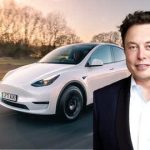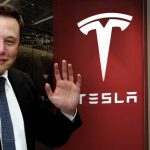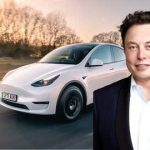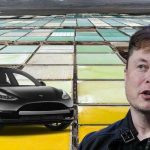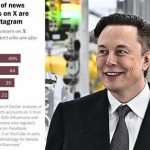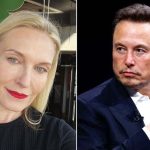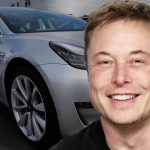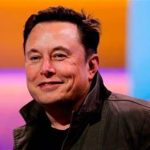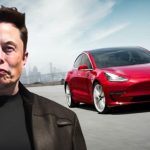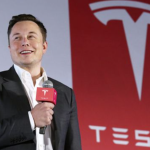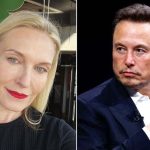Elon Musk: A Life Worthy of a Netflix Blockbuster

Elon Musk: A Life Worthy of a Netflix Blockbuster
Elon Musk—a name that echoes across tech labs, boardrooms, and starry skies—an icon whose life feels less like a biography and more like a script for a Netflix blockbuster. He’s not just a success story; he’s a rollercoaster of bold gambles, epic failures, and jaw-dropping triumphs that could fill a dozen seasons with drama, suspense, and sci-fi flair. From coding in a Pretoria basement to launching rockets into orbit, Musk’s journey is a wild ride through innovation, resilience, and a relentless hunger to reshape the world—and beyond. Picture this: sweeping aerial shots of SpaceX launches, tense boardroom showdowns, and a soundtrack pulsing with futuristic beats. Ready for the pilot episode? Let’s roll the tape on Elon Musk’s extraordinary saga! 🌍
The Prodigy from Pretoria 🌱
Cue the opening scene: 1971, Pretoria, South Africa—a skinny kid with a mop of hair sits hunched over a clunky Commodore VIC-20 computer. Elon Musk, born to an engineer dad and a model mom, isn’t your average 10-year-old. By 12, he’s taught himself programming from a manual, coding a space game called Blastar—a crude shooter he sold to a magazine for $500. It’s 1983, and this pint-sized geek is already dreaming in binary, devouring sci-fi novels like The Hitchhiker’s Guide to the Galaxy (his later SpaceX Roadster stunt nods to it). Bullied at school—once hospitalized after a beating—he finds solace in books and tech, his mind buzzing with ideas bigger than the dusty streets around him.
At 17, the plot twists: Musk bolts from South Africa to dodge mandatory military service under apartheid. With $2,000 and a suitcase, he lands in Canada in 1989, crashing with cousins and scraping by on odd jobs—shoveling grain, cutting logs. He hustles into Queen’s University, then transfers to the University of Pennsylvania, juggling physics and economics degrees by 1995. The U.S. beckons—a land of opportunity—and Musk arrives with a backpack and a vision. It’s the classic “hero leaves home” arc, setting the stage for a life of relentless reinvention.

Zip2: The First Big Score 💰
Fade in: 1995, Silicon Valley—a 24-year-old Musk, fresh from dropping out of a Stanford PhD, teams up with his brother Kimbal. They launch Zip2, a startup offering online maps and business directories—think Yelp meets Google Maps before either existed. The internet’s a toddler, dial-up screeches rule, and Musk’s betting on digital navigation when most folks still use paper Yellow Pages. He’s all-in—coding 20-hour days, sleeping on a beanbag in a dingy Palo Alto office, showering at the YMCA. “We lived on $1 hot dogs,” Kimbal recalls in a 2018 Rolling Stone piece.
The gamble pays off. By 1999, Compaq swoops in, buying Zip2 for $307 million—$22 million for Elon. At 28, he’s a millionaire, but he’s not popping champagne—he’s plotting. This isn’t the climax; it’s the inciting incident, handing him the cash and cred to chase wilder dreams. Cut to Musk, staring at the horizon: “This is just the start.” The audience leans in—what’s next?
PayPal: Rewriting Money’s Rules 💸
Season two kicks off with a bang: 1999, Musk founds X.com, an online bank to revolutionize finance. E-commerce is booming—eBay’s a juggernaut—but payments lag. Musk’s fix? Email-based transfers, instant and secure. X.com burns cash fast—$1 million a month—but signs up 100,000 users in a year. Then, drama: a 2000 merger with Confinity, home of a digital wallet called PayPal, run by Peter Thiel and Max Levchin. It’s a clash of titans—Musk’s grand financial hub vs. PayPal’s lean payment rocket.
The merged X.com, with Musk as CEO, hits turbulence. Tech crashes, branding wars erupt (“X” sounds edgy but vague), and PayPal’s eBay traction steals the show. In a 2000 coup—while Musk honeymoons in Australia—the board ousts him, Thiel takes over, and by 2001, it’s PayPal, Inc. Musk’s sidelined but keeps 11.7% equity. The payoff? eBay buys PayPal in 2002 for $1.5 billion in stock—Musk nets $165 million ($250 million today). He’s 31, rich, and restless. Cue the montage: cash flows into SpaceX and Tesla, his eyes glinting with cosmic ambition. PayPal’s 2025 stats—$1.5 trillion processed, 400 million users—owe a nod to his early spark.
SpaceX: To the Stars and Beyond 🌠
Season three’s where it gets cinematic: 2002, Musk founds SpaceX with $100 million from PayPal. Goal? Slash spaceflight costs, colonize Mars, save humanity. NASA laughs—private space is a pipe dream. Early episodes are brutal: three Falcon 1 failures (2006-2008) nearly bankrupt him. “I had $20 million left,” he told 60 Minutes in 2012. Launch four, 2008—it flies. NASA signs a $1.6 billion deal, and SpaceX is born.
Fast-forward: reusable Falcon 9s land upright (200+ times by 2025), Starship’s 2025 orbital test eyes Mars 2029, and 300+ missions lift SpaceX to $350 billion. Musk’s hands-on—coding flight software, living at Starbase—drives 134 launches in 2024 alone. Picture the climax: a Starship roaring skyward, Musk watching, whispering, “We’re going multi-planetary.” It’s not sci-fi—it’s his script, and he’s directing every frame.
Tesla: Powering the Future 🚗
Cut to a parallel arc: 2004, Musk invests $6.5 million in Tesla Motors, a fledgling EV startup, becoming chairman, then CEO in 2008. Cars run on gas—EVs are golf carts. Musk disagrees. The 2008 Roadster (200 miles range) stuns; the 2012 Model S (luxury, 300 miles) rewrites the game. “Production hell” in 2017—Model 3’s ramp-up—sees him sleeping on factory floors, nearly broke again ($35 million personal bailout). By 2025, 5 million Teslas roll, cutting 25 million tons of CO2, valued at $1 trillion.
Tesla’s not just cars—Solar Roofs, Powerwalls, Megapacks weave a clean energy web. Musk’s vision: a fossil-free world. Critics scoff—battery mining’s dirty—but he pushes on, slashing costs 90% since 2010. Scene: Musk in a beat-up Model S, grinning, “We’re electrifying everything.”
Neuralink and The Boring Company: The Wild Cards 🧠
Season five throws curveballs: Neuralink (2016) aims to fuse brains with AI—2021’s monkey plays Pong with its mind; 2025 human trials click cursors via thought. The Boring Company (2016) digs tunnels to zap traffic—Vegas Loop moves 4,400 hourly by 2025. They’re quirky, ambitious, pure Musk—solving big problems with big swings. Cut to him sketching tunnel maps or brain chips on napkins, muttering, “Why not?”
The Highs and Lows 💪
Musk’s series isn’t all wins—2008 nearly kills SpaceX and Tesla; he’s broke, divorced, sleeping on couches. X’s 2022 $44 billion buyout tanks ads ($1 billion lost, 2023). Critics blast overpromises—FSD by 2019? Nope. Yet, he shrugs on X: “Failure’s how we learn.” Bankruptcy looms, boards revolt (PayPal, Tesla), but Musk doubles down—$200 billion net worth by 2025 proves the bet. Flashback: Pretoria kid coding through bullies, now a titan defying gravity—literal and figurative.
The Inspiration Factor ✨
Musk’s a global muse—millions cheer his X rants (“Mars or bust!”), kids code apps inspired by Blastar, entrepreneurs mimic his hustle. He’s innovation’s poster boy—SpaceX’s 4,000 Starlink satellites, Tesla’s green empire show what’s possible with guts and vision. “If I can do it, anyone can,” he’s said on Joe Rogan (2021). Cue the swelling music: a montage of rockets, EVs, and starry-eyed fans.
The Netflix Pitch 🎬
Imagine it: Elon: The Techno King—Season 1, Pretoria to PayPal; Season 2, SpaceX’s fiery rise; Season 3, Tesla’s electric reign. Cinematic shots—Falcon 9 landings, Gigafactory hum, Musk coding at 3 a.m. Cast him young (Timothée Chalamet?), older (RDJ vibes?). It’s got it all: drama (2008 crash), action (Starship blasts), heart (11 kids, tiny Texas home). Finale tease: Musk on Mars, smirking, “Told you so.”
His life’s proof—passion plus grit equals extraordinary. From $1 hot dogs to $350 billion SpaceX, Musk’s a blockbuster waiting to happen. So, your life’s series—what’s your first episode? Grab the remote—Musk’s saga says you can write a big one too! 🌟
